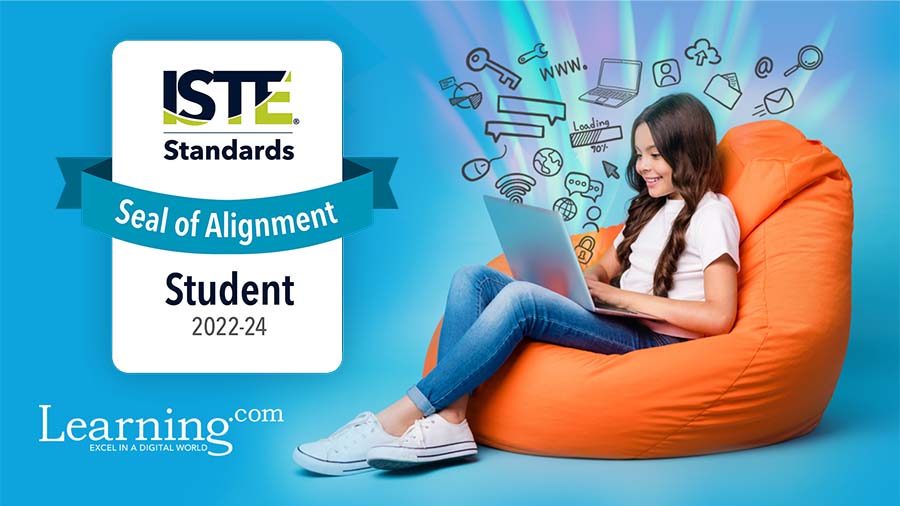If you are in the education industry, you may be familiar with the ISTE standards logos that appear on some products and programs related to digital literacy and technology curriculum. But what, exactly, is ISTE and how do their standards apply to learning?
In this article, we share information about the International Society for Technology in Education (ISTE), who is part of this organization, and how they determine the ISTE Standards.
What is ISTE?
ISTE stands for the International Society for Technology in Education. It is a non-profit organization that seeks to promote the integration of technology in teaching and learning. ISTE’s goal is to improve technology use in schools worldwide by using best practices associated with learning and technology to create high-impact, sustainable, scalable and equitable learning experiences for all learners.
ISTE is most well known for creating a set of technology learning and teaching standards for teachers, students, educational leaders and coaches. The goal of these standards is to provide guidelines that help these individuals create and utilize the most effective technology learning environment possible.
The ISTE standards have been used for over 20 years with continual updates that reflect the latest research and technology. This helps to ensure the standards reflect the most current research, technology, knowledge and pedagogy to help the standards become–and stay–as relevant and effective as possible. These standards have been adopted in all 50 U.S. states and several countries throughout the world. They are available in eight languages.
Who is Part of ISTE?
The ISTE organization has offices based in Portland, Oregon and Arlington, Virginia, with a professional team of over 60 experts with backgrounds in education systems, policy, technology and more. Together, the nonprofit delivers guidance and professional learning in the form of coaching, “year-round academies,” publications, virtual networks, events and more in addition to the ISTE Standards.
ISTE also offers membership to the ISTE community for educators. This community provides professional development opportunities such as biweekly edtech webinars, online courses and newsletters as well as networking opportunities.
What is the ISTE Seal of Alignment?
The ISTE Seal of Alignment is a seal and designation that affirms that a specific program, product, or resource aligns with the ISTE standards. This seal of alignment helps educators more easily distinguish which resources and tools provide high-quality, standards-aligned technology learning.
In order to receive an ISTE Seal of Alignment, the program or product must undergo a rigorous review by a panel of subject matter experts with a deep understanding of ISTE Standards. They are evaluated based on their pedagogical values and the extent to which they build the skills embodied in the ISTE standards.
ISTE History
ISTE was founded in 1979 by David Morsund and a group of K-12 and University of Oregon teachers. The organization was originally named the International Council for Computers in Education (ICCE), but changed its name in 1990. The goal of this early group was to help “computers do what they do best,” and “free up humans to do what they do best.” This mission helped to inform the original mission of ISTE and the ISTE standards, helping to empower educators and learners with the best practices for learning and harnessing technology in the most effective ways possible.
Explore Our ISTE-Aligned Programs
Learning.com offers technology learning platforms for students that have earned ISTE Seals of Alignment. To learn more, explore these programs by clicking the buttons below.

Learning.com Team
Staff Writers
Founded in 1999, Learning.com provides educators with solutions to prepare their students with critical digital skills. Our web-based curriculum for grades K-12 engages students as they learn keyboarding, online safety, applied productivity tools, computational thinking, coding and more.
Further Reading
What Is Digital Citizenship? Key Skills & Best Practices for Students
In a world dominated by virtual interactions, being a responsible digital citizen has never been more crucial. Students today grow up with social...
Teaching Children How to Effectively Handle Cyberbullying
In today’s digital age, online safety is a critical concern for children navigating the internet. While the internet provides endless opportunities...
Examples of Abstraction in Everyday Life: How Students Already Use Computational Thinking
Computational thinking, though often perceived as a concept limited to technology or coding, is a valuable problem-solving skill that students...




